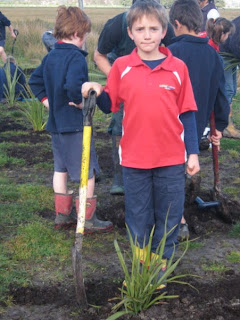Room 15 went to the Nelson museum to be the trial class for the Cawthron Exhibition. Thomas Cawthron came to Nelson in 1849 and gave money to the city for many projects. The Cawthron Institute is named after him.
Scientists from the Cawthron recently investigated why dogs were dying on an Auckland beach. We acted as detectives to find out how they solved the mystery.
We found out how important fish ladders are for native fish that need to travel upstream past dams.
Long fin eels use these fish ladders. They can grow up to 2 metres long and live to be 50 years old. When they are ready to breed they swim nearly 5000 kilometres from NZ to Tonga. They only breed once in their life and then they die. The Cawthron Institute helps long fin eels survive by monitoring the water quality in the streams which are their habitats.
The Cawthron Institute also has a laboratory to test how some natural products can help us.
In the jars are some herbs and spices.
Scientists at the Cawthron aquaculture centre at the Glen experiment with growing different kinds of algae to feed the shellfish larvae that they breed. We liked the feel of the fake algae.
It was a very interesting exhibition and we all learnt heaps!






















































